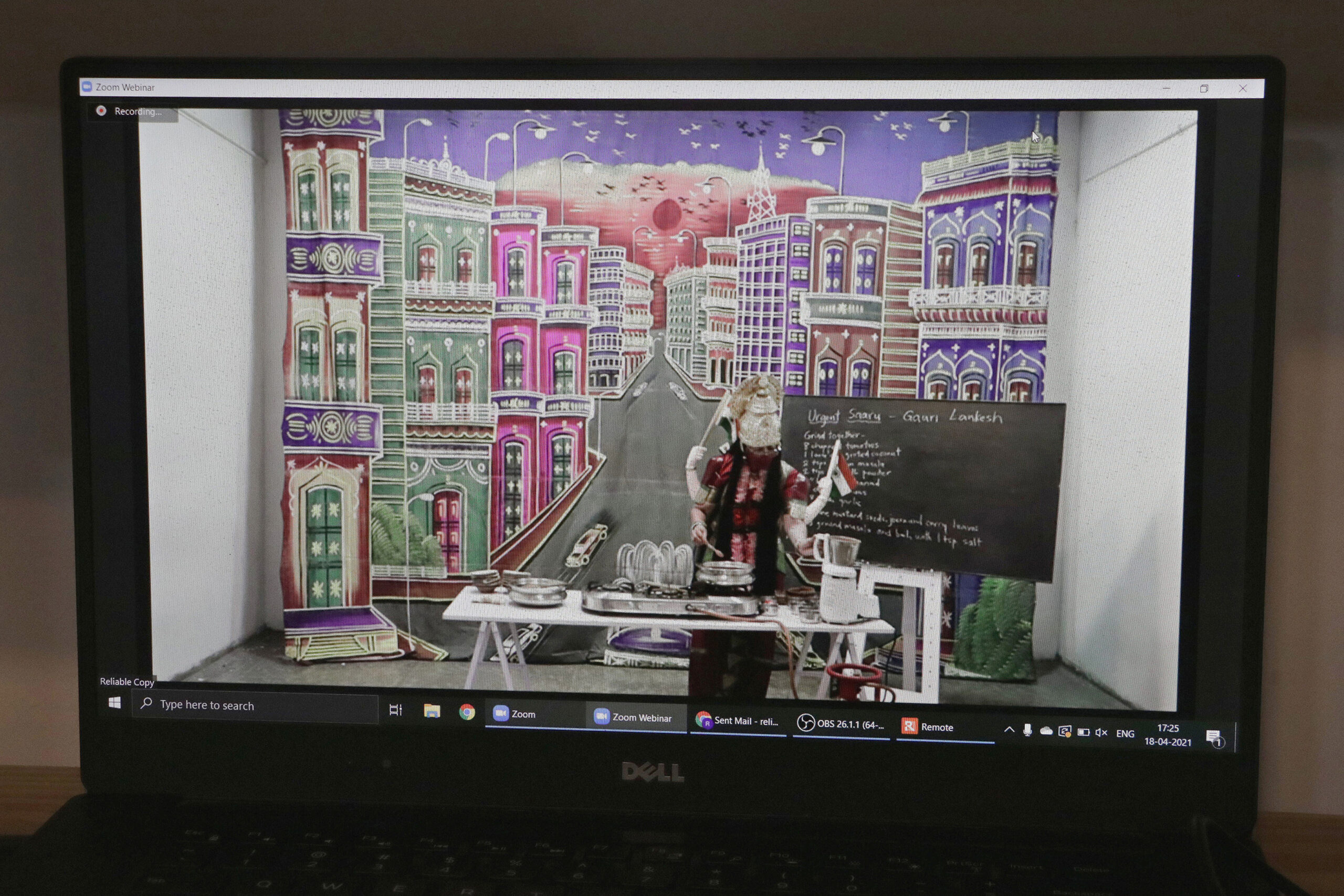Durga Puja Images and Pandals of Silchar:
Storyteller of Tradition, Socio-Culture and Aesthetics
Dr. Meghali Goswami
"Durga Puja, however, goes far beyond religious gathering of a particular religion, or community. In fact, visiting the Pandals in recent years, one can only say that Durga Puja is one of the largest outdoor art festivals. In the 1980s, a predominance of architectural models came up on the pandal exteriors, but today the art motif extends to elaborate interiors, executed by trained artists, with consistent stylistic elements, experimenting carefully and executed and bearing the name of the artist. In the olden days, all five idols would be depicted in a single frame, traditionally called pata.
The socio political development of people can be traced from its art, literature, science, philosophy, social organization etc. Hence, the history of the culture of a given group of people does not stand alone. To detect the relation between art and culture of people we cannot ignore the dialectical stages through which it has got to pass (Ducasse : 1966).
It can be said that people belonging to a region or a cultural entity are noted for their particular way of life. The different aspects of this way of life reveal the extent of civilization attained by the people concerned. One of the most important aspects of the way of life attained by a cultural group of people is its achievement in development of art (Read:1951). In broader sense, art covers all the phenomena which are the outcome of the exercise of human ingenuity as directly opposed to ‘nature’ which may in no way controls. However in the stern scene different forms of arts are the results of human activity to express their cultural attainment. The discussion of art as a form of pictorial framework, and having a language-like character can be clearly traced in the Durga Puja Pandals, which acts as a vehicle showcasing the amalgamation of tradition, culture and the art form of the ‘time’.
The appearance of white Kash Reeds in open fields, a sudden crispness in the air, and a sparkling blue sky at the end of monsoon, the emotional resonance of the festival remains inextricable linked to such picturesque invocations of the Sharat season. The town however produces its altogether different visual and seasonal ambience of the oncoming festival (Thakurta: 2015).
Today Durga Puja, however, goes far beyond religious gathering of a particular religion, or community. In fact, visiting the Pandals in recent years, one can only say that Durga Puja is one of the largest outdoor art festivals. In the 1980s, a predominance of architectural models came up on the pandal exteriors, but today the art motif extends to elaborate interiors, executed by trained artists, with consistent stylistic elements, experimenting carefully and executed and bearing the name of the artist. In the olden days, all five idols would be depicted in a single frame, traditionally called pata. Since the 1980s however, the trend is to depict each idol separately. In fact the Pandals acts as a medium to showcase the variety of art forms of different civilization, culture and tradition. Next or one can say in parallel to West Bengal, Assam is the second state where Durga Puja is celebrated with pomp and grandeur. Durga Puja is the most popular festival of Assam after Bihu (the festival of Assam). According to historian Late Benudhar Sarma, the present form of worship of Durga with earthen idols in Assam was started during the reign of Ahom King Susenghphaa or Pratap Singha. The King heard about the festivity, the pomp and grandeur with which the King Naranarayan of Koch Bihar celebrated Durga Puja from one Sondar Gohain, who was under captivity of the Koch raja. King Pratap Singha sent artisans to Koch Bihar to learn the art of idol making. The King organised the first such Durga Puja celebration in Bhatiapara near Sibsagar. This was the first time Durga Puja with earthen idols in Assam was held for the masses, in addition to the worship in Durga temples like Kamakhya, Digheswari Temple, maha Bhairabi Temple, Ugrotara, Tamreswari mandir, etc as a part of cult. Subsequently, similar Pujas were celebrated by other Kings and nobles. Nowadays the Durga Puja is mostly a community festival celebrated in all the cities, towns and villages of Assam with great festivity and religious fervour for five days.



